Sauerkraut
Thursday 22 nd August 2013.JPG) Sauerkraut is a food both therapeutic and savoury. It’s the richest food in lactobacillus among all lacto-fermented food, so it’s an essential aliment when the gut flora is weak and unbalanced. Furthermore, all vitamins and minerals are even higher than cooked or raw cabbage. It has even more properties, as you can read in this article. But it’s also delicious as garnish in salads, soup or sausages.
Sauerkraut is a food both therapeutic and savoury. It’s the richest food in lactobacillus among all lacto-fermented food, so it’s an essential aliment when the gut flora is weak and unbalanced. Furthermore, all vitamins and minerals are even higher than cooked or raw cabbage. It has even more properties, as you can read in this article. But it’s also delicious as garnish in salads, soup or sausages.There are several recipes to do sauerkraut, I’ve learned it from GAPS diet (Cooking With GAPS DVD).
Ingredients
Cabbage or kale (white, red, ...): about 1,5 kg
Salt: about 15 gr or 1 big teaspoon
Kitchen tools:
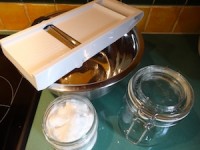
Kitchen grater for vegetables
Big bowl
Glass hermetic container of approx. 75 cl
Instructions
1 -. Separating the first two leaves of the cabbage and set aside.
2 -. Locate the grater on the bowl and grate the cabbage into thin strips.
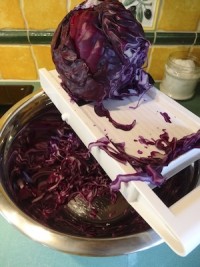
3 -. Pour a teaspoon of salt
4 -. Stir and press with your hand to make juice out. When there is enough juice to bathe the cabbage then it’s ready. If you need it, we can add a little salt to help with the task, or a little water.
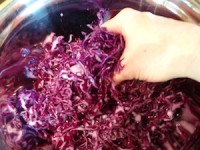
5.- Put the cabbage with the juice in the glass container. Press well to compress and squeeze out all the air inside, the juice must cover all the cabbage.
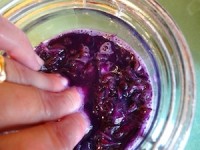
6 -. Cover with a sheet of cabbage.
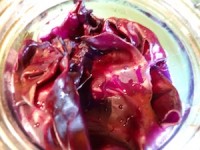
7 -. Optionally, you can put a small glass or cup over the sheet to pressure and ensure that all the cabbage is well immersed in its own juice.
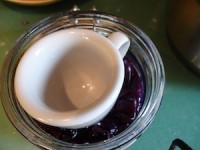
8.- Leave to ferment in darkness, covering with a cloth or inside a cupboard. There are different possibilities:
1 week about 20ºC and then 3 weeks in a cellar at low temperature (according to Claude Aubert)
1 week at room temperature or 2 weeks in a cool place (according to Dr. Campbell-McBride)
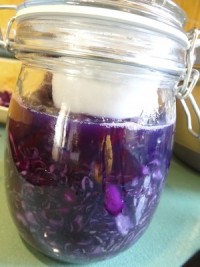
Tip: If you use red cabbage, to avoid red hands at the end, you can use latex mitts.
- Share
-

-

-

-

-

-
 Send to a friend
Send to a friend
-
 more...
more...
- | Post a Comment

